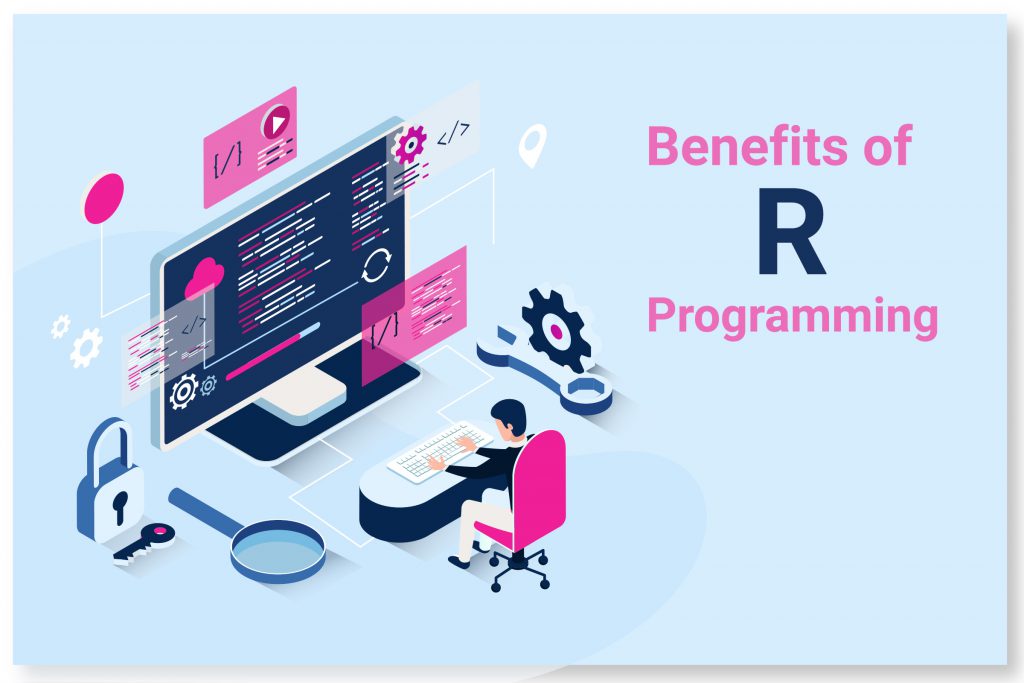If you’re in the software engineering industry, you’ve surely heard about the R programming language–it’s one of the commonly used programming languages for statistical computing and graphics. Any professional software programmer specializing in statistics and graphics must have extensive experience in R programming. If you want to hire R programmers from freelancing sites like Guru for your statistical tools and programs, make sure they’re familiar with the programming language.
R programming is also useful to data analysts because it enables them to collect, clean, analyze, and present data quickly and effectively. So, ensure that the data analysts you hire know how to use R programming for data analysis because they’ll use it in virtually every project. Read on to learn more about the benefits of the R programming language.
What Is R Programming?
As noted above, R programming is one of the most popular programming languages for statistical calculations and graphics. Software engineers commonly use it, data analysts, statisticians, and other professionals involved in data science. This programming language is a GNU project that provides a wide range of statistical and graphical methods, including linear and non-linear modeling, time series analysis, clustering, classical statistical trials, and classification.
The R programming language is extensible and offers an open-source environment, allowing programmers to access it free; however, this language must be used under the terms provided in the Free Software Foundation’s GNU General Public License. The R programming language brings together and runs on various UNIX platforms and other similar systems, including FreeBSD, Linux, Windows, and MacOS.
How Is the R Programming Language Beneficial?
Although R programming is one of the most effective statistical programming languages in the world, it’s important to consider its benefits and drawbacks before you start using it. Here are the main benefits of the R programming language:
Excellent Statistical Calculations and Data Analysis
Because the R programming language is a statistical language developed by statisticians, its performance in statistical calculation is excellent–this is why it’s the most commonly used programming language for engineering statistical software and tools.
A Broad Range of Libraries
The vast R programming community has developed numerous libraries to support and improve the R programming environment, and this language has the largest and most useful graphical libraries. Furthermore, these libraries have a wide range of applications that enable programmers to perform different tasks.
Open-Source Environment
Since R is an open-source language, anyone can use it without a license or paying subscription fees. This has made the R programming language popular among software programmers because they can use it without any limitations. It has also attracted a huge community of programmers and other professionals who contribute immensely to its environment.
Support Across Different Platforms
It’s important to note that the R programming language is machine-independent. Therefore, it supports operations across different platforms, making your work easy. Also, you can use it on many operating systems without a hassle.
Support Across Different Types of Data
The R programming language effectively functions on a wide range of data types, including vectors, matrices, arrays, and other data objects of diverse sizes.
Data Cleansing, Wrangling, and Scraping
R programming allows you to do web scraping to collect the most useful data for your research. It also does data cleansing by allowing you to identify and remove/correct erroneous or corrupt data, and if you want to do some data wrangling, the R programming language lets you do so efficiently. Data wrangling involves converting raw data into different formats for better consumption.
Powerful Graphics
Its extensive libraries allow the R programming language to generate high-quality graphs and visuals. Furthermore, these graphs can be either static or dynamic.
An Active Community
The R programming community is vast and active. It comprises members from all over the world, who come together to help and support each other, which is why most of the latest ideas and technologies for improving the R environment emanate from this community.
No Compiler Is Needed
Since R programming is an interpreted language, it doesn’t require a compiler to convert the code into a usable program. It simply interprets the code into lower-level calls and a code that has been pre-compiled.
Compatible With Other Languages
Unlike other programming languages, R programming is compatible with many other programming languages, including C++, Fortran, C, and more. Additionally, you can manipulate objects directly with other programming languages like .NET, Python, and Java.
Great for Machine Learning
The R programming language is quite useful for artificial intelligence and machine learning. For instance, Facebook uses R for most of its machine learning studies. This programming language is also used for sentiment analysis and mood predictions and is most effective when used for exploration or developing one-off models. From R programmers to NinjaTrader programmers, you can find the expert you need on Guru.



